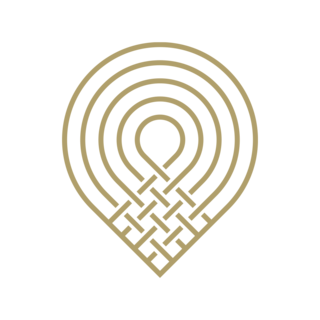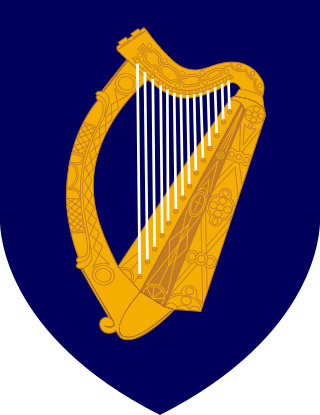
Údarás na Gaeltachta, abbreviated UnaG, is a regional state agency which is responsible for the economic, social and cultural development of Irish-speaking (Gaeltacht) regions of Ireland. Its stated purpose is to strengthen the Gaeltacht communities, to increase the quality of life of its community members and facilitate the preservation and extension of the Irish language as the principal language of the region. It gives funding to small local businesses that have to compete with foreign companies.

Ráth Chairn is a small village and Gaeltacht in County Meath, Ireland. It is about 55 km northwest of Dublin. Ráth Chairn Gaeltacht was founded in 1935 when 27 families from Connemara, mostly from Ceantar na nOileán, were settled on land previously acquired by the Irish Land Commission, followed by a further 11 families in 1937. In all 443 people moved to the area.

Rosmuc or Ros Muc, sometimes anglicised as Rosmuck, is a village in the Conamara Gaeltacht of County Galway, Ireland. It lies halfway between the town of Clifden and the city of Galway. Irish is the predominant spoken language in the area, with the electoral division of Turlough, Rosmuc, representing one of the highest percentages of Irish-speaking people in the country. The townland of Rosmuck is part of the civil parish of Kilcummin.

Furbo or Furbogh is a settlement in Connemara, County Galway, Ireland. As of the 2022 census, it had a population of 868 people. It lies along the coast, overlooking Galway Bay, in a Gaeltacht area.

Anagaire is a village in The Rosses district of County Donegal, Ireland. As of 2016, the population was 236.
Coimisiún na Gaeltachta, abbreviated CnaG, was an Irish government agency which worked from 2000 to 2002 to draft recommendations to strengthen the role of the Irish language in the Gaeltacht, the Irish-language-speaking area of Ireland. It was established at the instigation of Éamon Ó Cuív, the then Minister of State at the Department of Arts, Heritage, Gaeltacht and the Islands and its work completed under the guidance of his successor, Mary Coughlan. The Irish Government approved the publication of the Commission's report, without commitment.

Ring or Ringagonagh is a parish within the Irish-speaking Gaeltacht na nDéise area in County Waterford, Ireland. It lies on a peninsula about eleven kilometres (7 mi) south of Dungarvan. The main settlement is the village of Ring or Ringville, which is within the townland of Ballynagaul.
Gluaiseacht Cearta Sibhialta na Gaeltachta or Coiste Cearta Síbialta na Gaeilge, was a pressure group campaigning for social, economic and cultural rights for native-speakers of Irish living in Gaeltacht areas. It was founded in Connemara in 1969 to highlight the decline of the Irish language and to campaign for greater rights for Irish speaking areas in the area of access to services, broadcasting and ultimately an elected assembly of their own. It was later named Gluaiseacht na Gaeltachta.

The North American Gaeltacht is a gathering place for Irish speakers in the community of Tamworth, Ontario, in Canada. The nearest main township is Erinsville, Ontario. Unlike in Ireland, where the term "Gaeltacht" refers to an area where Irish is the traditional language, this part of Ontario has no resident native Irish speakers. The name refers instead to its being a meeting place for Irish speakers from North America and elsewhere.
A Neo-Gaeltacht is an area where Irish has a strong presence as a spoken language but is not part of the officially defined or traditional Gaeltacht areas. It has been argued that non-Gaeltacht activist groups wishing to establish an Irish language community need to show that it is large, permanent and formally organised and that it has a growing number of people using Irish as their first language. Another objective is a situation in which children use Irish among themselves and with other Irish speakers in a natural way while being able to deal with a largely English-speaking world.
Comórtas Peile na Gaeltachta is an annual All Ireland Gaelic football competition contested by clubs from the Irish language-speaking Gaeltacht areas of Ireland. Clubs compete on a county-basis at first, in order to qualify for the tournament that is hosted by a different club from the Gaeltacht each year. The first competition was held in Gweedore, County Donegal in 1969 and was won by the local club CLG Ghaoth Dobhair. RTÉ Raidió na Gaeltachta provides radio coverage of both the regional qualifiers and the national finals, held over the June Bank Holiday. TG4 provides live television coverage of the men's semi-finals and finals on the June Bank Holiday Sunday and Monday, and these are also broadcast online.

The official status of the Irish language has remained high in the Republic of Ireland from foundation. This reflects the dominance of the language in Irish cultural and social history until the nineteenth century and its role in Irish cultural identity. In 2022, strong recognition was added in Northern Ireland also. In the 2022 Republic of Ireland census 1,873,997 people or 39.8% of the population in the Republic of Ireland said that they had some ability to speak Irish, out of an overall population of 5,149,139. In Northern Ireland 228,600 people (12.4%) have some ability in the Irish language according to the 2021 census for Northern Ireland, out of a population of 1,903,175 people. It has been found, however, that while ideological support for Irish is high, actual routine use is very low, and that there is very little or rare correlation between personal fluency in the language and the perceived value of Irish as an identity-marker. Nevertheless, the language benefits from the support of activists who continue to use it as a social and cultural medium.

Baile Ghib is a small village and Gaeltacht in County Meath, Ireland. It is about 70km northwest of Dublin city.
Conamara Theas is a predominantly Irish-speaking district in the West of County Galway. There are around 7,000 people living in the area. Between 60% and 80% of residents are native Irish speakers. It is the part of the Gaeltacht that is west of Cois Fharraige. The Conamara Theas variety of Connacht Irish is different from that of Cois Fharraige.

Cois Fharraige, previously spelled Cois Fhairrge, is a coastal area west of Galway city, where the Irish language is the predominant language. It stretches from Na Forbacha, Bearna, An Spidéal to Indreabhán. There are between 8,000 and 9,000 people living in this area.
The Achréidh na Gaillimhe comprises five electoral divisions: Bearna, Baile an Bhriotaigh, An Caisleán Gearr, Mionlach and Cnoc na Cathrach. Due to its proximity to Ireland's biggest Gaeltacht, Galway city has always been important for the language movement and many Irish speakers settling or moving to Galway. According to the 2016 census, 31,583 people (41%) in Galway City said they could speak Irish, but only 2,344 people (3%) spoke it daily.

Gaeltacht na nDéise is a Gaeltacht area in County Waterford consisting of the areas of Ring and Old Parish. It is located 10 km from the town of Dungarvan. Gaeltacht na nDéise has a population of 1,816 people and encompasses a geographical area of 62 km2. This represents 1% of total Gaeltacht area.
Muintir na Gaeltachta was a lobby-group representing Irish-speaking inhabitants of the Gaeltacht. It was founded in the winter of 1933–34, with Seán Ó Coisdeala, a national school teacher from Tully in Connemara, as President and Pádraig Seoige as secretary. Other founders included Peadar Duignan, Seán Tubridy, and Máirtín Ó Cadhain. In 1935, in conjunction with the Land Commission, it helped to establish the Meath Gaeltacht by transplanting Irish-speaking families from Connacht. Its office was in Kells, County Meath. It was a registered nominating body for the Cultural and Educational Panel of Seanad Éireann through the 1997 election.

The Gaeltacht Act 2012 is an Act of the Oireachtas of Ireland. The Act redefined the traditional Irish-speaking areas or Gaeltacht in the Republic of Ireland on linguistic criteria instead of on geographic areas which had been the position until 2012. While the traditional Gaeltacht boundaries still exist the Act sets out ways where areas outside the Gaeltacht can be formally designated as Irish Language Networks and Gaeltacht Service Towns.

A Gaeltacht Service Town is an area designated under the Gaeltacht Act 2012, situated in or adjacent to Gaeltacht areas in Ireland, that have a population of over 1,000 people, and which play a significant role in providing public services, recreational and commercial facilities for Gaeltacht residents.




















